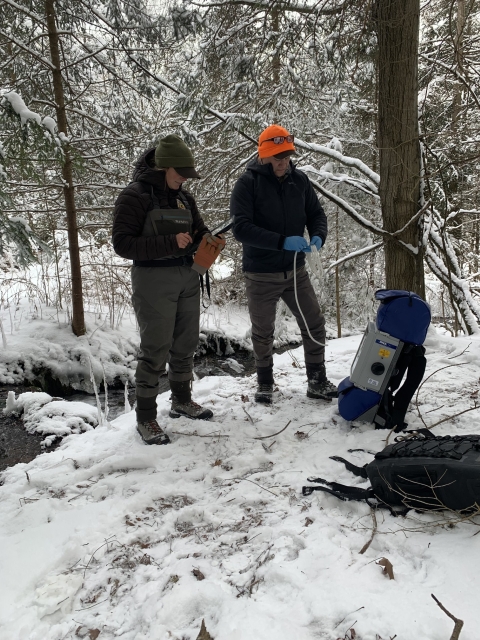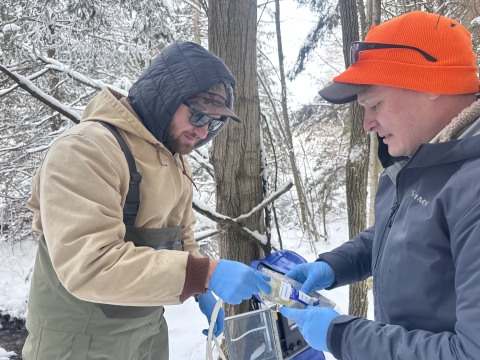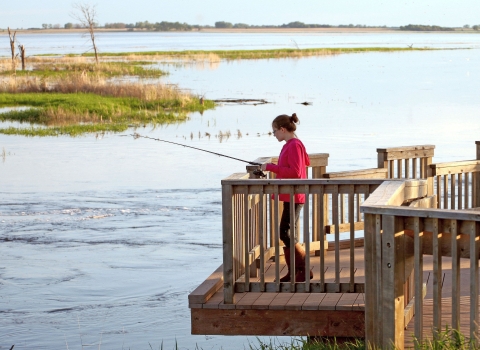Although the technology has been around since the 1980’s, the use of environmental DNA (eDNA) in recent years has revolutionized the field of aquatic ecology. It provides a non-invasive and efficient way to monitor fish populations and their habitats. By comparison, traditional methods for collecting fish with nets or electrofishing can be time consuming and labor intensive. Collecting water samples for eDNA testing is a much quicker method for sampling more sites within a stream, and for sampling more streams within a drainage basin in a single season. Genetic analyses can also provide identifications quicker than manually sorting through fish samples back at the lab or in the field when you have a lot of samples to process. Additionally, we can eliminate stress to more sensitive fish like brook trout, particularly during warmer months, by not using electrofishing to collect fish. Habitat restoration biologists with the Lower Great Lakes Fish and Wildlife Conservation Office (FWCO) are excited to be working with Trout Unlimited to assess the distribution of brook trout or Salvelinus fontinalis in streams in upstate and central New York using new eDNA sampling technology.
The brook trout is the state fish of New York and a very popular fish for anglers in New York, and for visitors to New York.
We are collecting water samples from selected sites in the Adirondack Mountains and in the Genesee River drainage basin of New York, which we will then analyze for environmental DNA shed by brook trout naturally in their feces, mucus, and scales. This approach allows us to sample remote areas more efficiently and allows us to sample more rivers and streams in a season than would traditional electrofishing and net fishing methods.
Brook trout are sensitive to changes in water quality, and as such, are useful indicators of ecosystem health. The information we gather on where brook trout are will tell us where we have good water quality and most likely good habitat. We will use this data to help us be strategic in directing habitat restoration for brook trout and other fish. For example, we will implement habitat restoration that increases connections between these brook trout populations, that increases access for fish (and anglers) to good habitats, and that helps the brook trout to grow in numbers. The information we gather from this study will also help us identify potential areas of concern that don’t have brook trout. Together, the U.S. Fish and Wildlife Service and Trout Unlimited are working to ensure these iconic fish thrive for generations to come!







